MAY DEVOTION:
“THE SO-CALLED BROTHERS AND SISTERS OF JESUS CHRIST IN THE BIBLE: WHO REALLY ARE THEY?”
Studying the Scripture has always been a very challenging and difficult task. Far beyond the perception of just reading (or cramming) from Genesis to Revelation (as some may see it); scriptural studies among other criteria include a comprehensive study of the language, culture, codes, metaphoric expressions, life’s setting/social context (sitz im leben) etc. of the Jewish people, in order to transcend the literal meaning and understand the allegorical, anagogical, and the sociological interpretation. These criteria are often very rigorous and demanding, as such, many people find it difficult venturing into it; they just stop at the literal meaning of the Scripture and make their interpretation. This has created a lot of problems for real biblical scholars in the past and at present.
Why did I have to talk about this? Today in this month of May (which Catholics dedicate to the Blessed Virgin Mary), we are presented with the issue of the brothers and sisters of Jesus Christ as indicated LITERALLY in the Scripture. Till date, many people (as a result of their ignorance vis-à-vis biblical interpretation have misinterpreted that aspect, taking only its literal meaning and making hasty conclusions; and this has generated further problems/reactions against the Church’s doctrine.
Dear friends, let us bear in mind that the major part of the Old Testament was written in Hebrew except for few parts in Aramaic, used in the books of Daniel, Ezra and a few other places in the Hebrew Bible. The very first translation of the Hebrew Bible was into Greek. This is known as the Septuagint (LXX), which later became the received text of the Old Testament in the Catholic Church and the basis of its Canon. The Greek version of the Old Testament was translated by Hellenistic Jewish scholars a century or two before Christ’s birth for Jews (Hellenists) who couldn’t understand Hebrew/Aramaic (the Jewish language) as a result of living in diaspora (coming in contact with the Greek world and culture at that time). As a follow up, the New Testament writers (the apostles and early Christians), under the influence of the Holy Spirit, wrote down in Greek.
Having established this fact; looking at the issue before us, how do we understand the “brothers and sisters of Jesus as indicated in the New Testament? There are many instances in the New Testament where “brothers” and “sisters” of the Lord are mentioned (Matt. 12:46; Matt. 13:55; Mark 3:31–34; Mark 6:3; Luke 8:19–20; John 2:12, 7:3, 5, 10; Acts 1:14; 1 Cor. 9:5; Gal. 1:19). When trying to understand these verses, note that the term “brother” (in Greek: adelphos) has a wide meaning in the Bible. It is not restricted to the literal meaning of a full brother or half-brother. The same goes for “sister” (in Greek adelphe) and the plural form “brothers” (adelphoi).
The Old Testament (written originally in Hebrew) also shows that the word “brother” has a wide semantic range of meaning and could refer to any male relative from different parents, just as we still apply in our respective cultures in Nigeria etc. In the Old Testament, Lot, for example, is called Abraham’s “brother” (Gen. 14:14), even though, being the son of Haran (the brother of Abraham) (Gen. 11:26–28), Lot was actually Abraham’s nephew. Similarly, Jacob is called the “brother” of his uncle Laban (Gen. 29:15) etc. This is so because neither Hebrew nor Aramaic had a special word meaning “cousin,” etc. Hence, speakers of those languages could use either the word for “brother” or a circumlocution, such as “the son of my uncle.” However, circumlocutions are clumsy, so the Jews often used “brother” or “sister” (where it applies). In the same vein, the writers of the New Testament imported the Hebraic/Aramaic sentiment of the use of “brothers” and “sisters” when they wrote in Greek. In other words, they did the same thing the translators of the Greek Septuagint did. That is, translating the Old Testament from Hebrew to Greek, the Jewish translators grouped the idea of cousin, nephew, niece, etc. to mean brother (ἀδελφός – adelphos) as indicated in the Hebrew Bible, inasmuch as the Greek language has a separate word for cousin (anepsios). Put differently, the translators of the Greek Septuagint used adelphos, even for true cousins.
This is exactly the issue in Matthew 13:55-56. Here, the evangelist grouped some persons as the brothers (adelphos) of Jesus – James, Joseph, Simon, and Jude. Matthew did not end there. He went further to note at the crucifixion scene (in Matthew 27:56) the presence of some women such as Mary Magdalene, Mary the mother of James and Joseph (note this), and the mother of the sons of Zebedee. This truth becomes clearer when we cross-reference it with John 19:25. It says: “at the cross were present the mother (Mary) of Jesus, and her sister, Mary (the wife of Clopas), and Mary of Magdala”. That is, 3 Marys at the foot of the cross! Why is this significant? Mary the wife of Clopas is known as the mother of James and Joseph (or Joset), and John says she is the sister of Mary the mother of Jesus as seen above. Therefore, her children (James and Joseph or Joset – Joset is another way of referring to Joseph Mk. 15:40) are certainly the cousins of Jesus. We must note that Alphaeus and Clopas are the same person, since the Aramaic name for Alphaeus could be rendered in Greek either as Alphaeus or as Clopas. Mark 3:18 made reference to James the son of Alphaeus (which is also known as Clopas). Another interpretation lies in the fact that according to the second-century historian Hegesippus, Clopas/Alphaeus was the brother of Joseph, the foster-father of Jesus. Hence, James his son would thus be Joseph’s nephew and a cousin of Jesus; that is why they were regarded as the brothers (adelphos) of Jesus.
For Simone and Jude (as cited in Mt. 13:55-56), Tradition has it that while Jude was the Lord’s relative, biblically he is known as the son of James in Luke 6:16 and Acts 1:13. He is also known as Thaddeus (Matthew 10:3; Mark 3:18). Tradition also has it that Simon was specially known as “Simon ben Clopas” (Simon son of Clopas) – part of the Clopas family, another relative of Jesus.
Similarly, Paul called James the Lord’s brother (Gal 1:19). This is the same James the son of Alpheus/Clopas. (Matt. 10:3). All these figures were according to the Scripture, known as relatives of Christ.
It is interesting to note that none of these so-called brothers and sisters of Jesus were NEVER referred to as the children of Mary or Joseph in the bible; Mary and Joseph at different times were referred to as the parents of Jesus alone. When the Holy family returned from Egypt, nothing was mentioned of Jesus’ brothers; instead, we hear of Joseph, Mary, and the Child. (Mt. 2:19-20). Likewise, when the parents of Jesus searched for Jesus for three days, nothing was said of his brothers. At this time, he was already twelve years. (Lk. 2:41-52). Before his death, in John 19:26, Jesus gives his mother to the Apostle John. If Jesus had blood brothers, then, it would violate Jewish customs that the next son in line would have to care for the mother. Being the only son, Jesus made sure that Mary was taken care of by a non-blood brother: the apostle John (brother of James).
Therefore, this proves that Matthew 13:55-56 in no way demonstrates that Mary had other children.
Now that you’ve known the truth, kindly share with others.
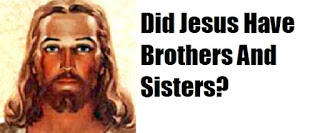
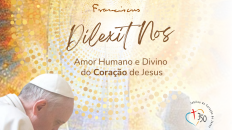
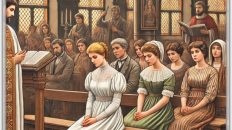
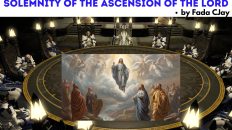
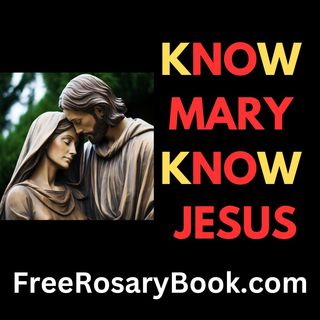
Contribution
I agreed with you Father.
Amongst the disciples of Christ some were related to him and his mother in a special way. That’s why Angel Gabriel addresses Elizabeth as Virgin Mary’s sister. Luke 1:36 Elizabeth mother who is Emeretia and Mary’s grandmother who is Ismeria are biological sisters. By extension, John the Baptist could be called Jesus Brother. For while Emeretia is his grandmother, Ismeria is Jesus great grandmother.
Thanks